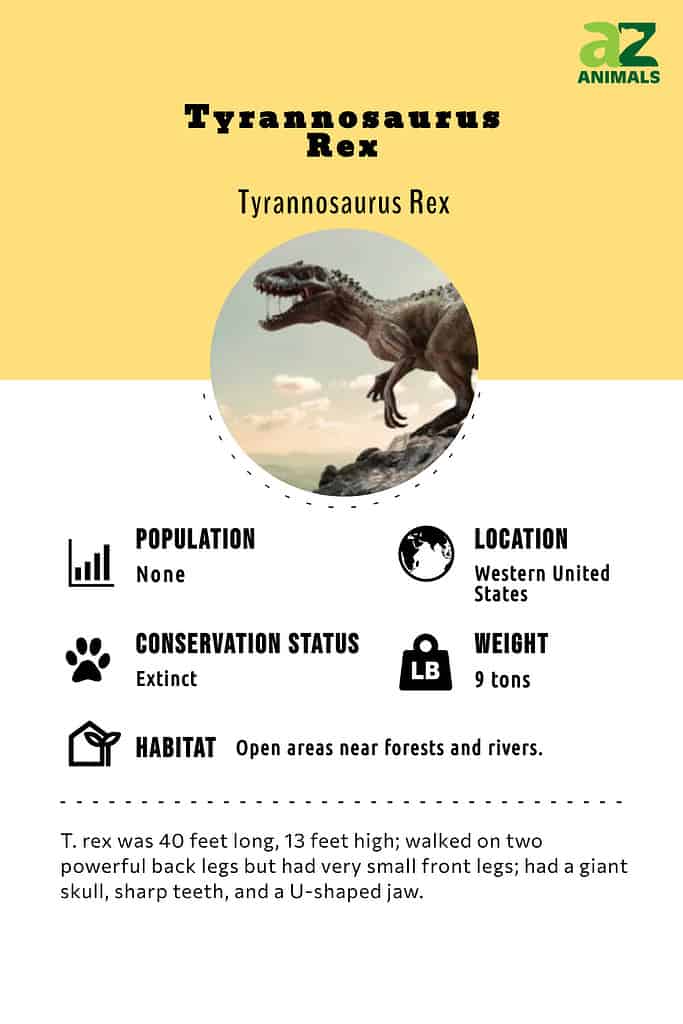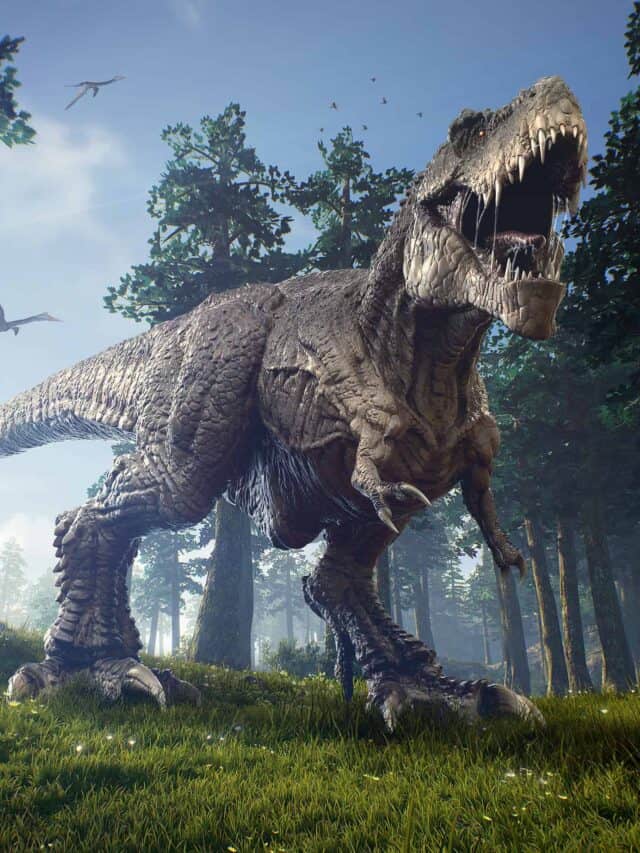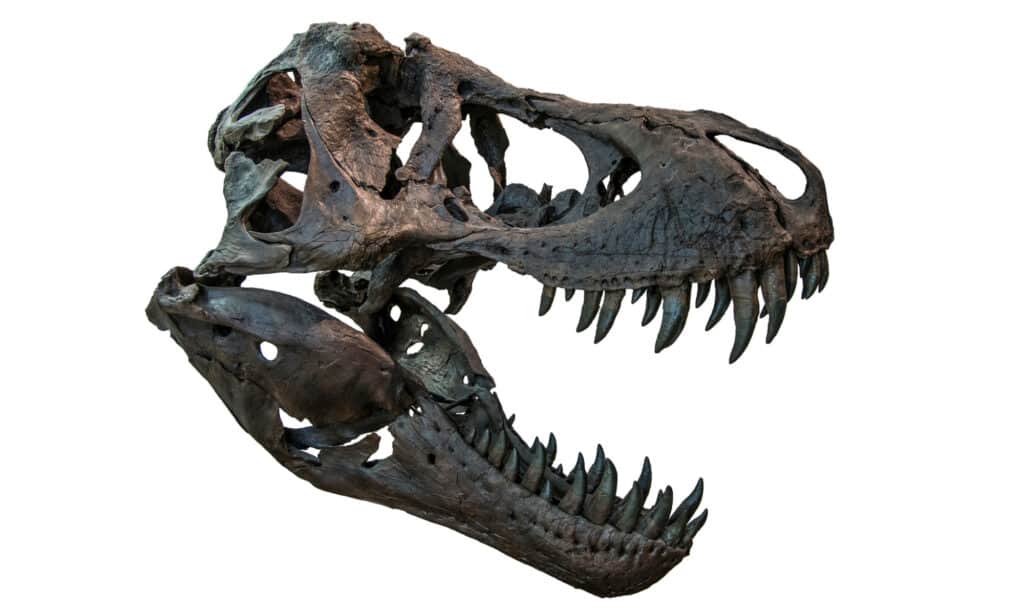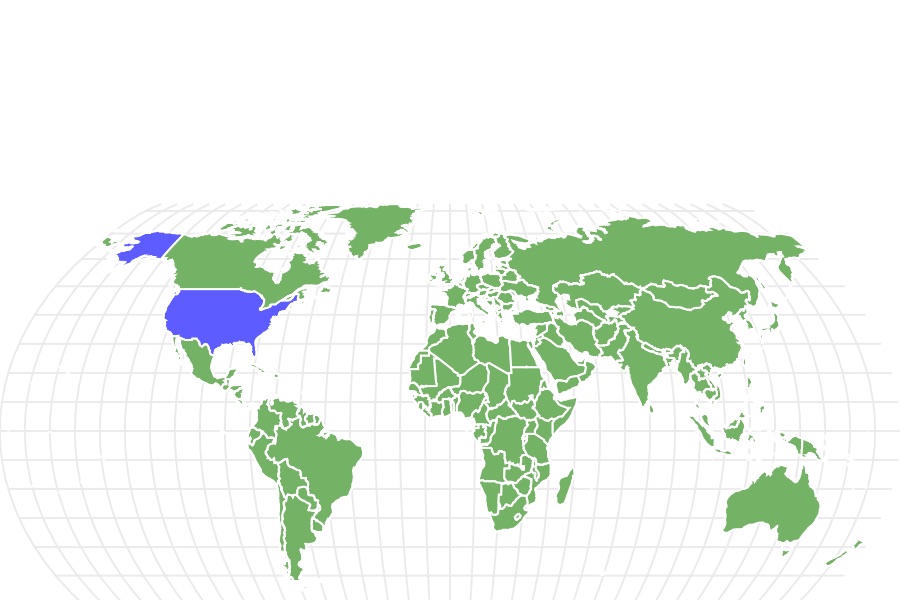Tyrannosaurus Rex
Tyrannosaurus rex
They had many air pockets in their skeleton which kept them light despite their tremendous size.
Advertisement
Tyrannosaurus Rex Scientific Classification
- Kingdom
- Animalia
- Phylum
- Chordata
- Family
- Tyrannosauridae
- Genus
- Tyrannosaurus
- Scientific Name
- Tyrannosaurus rex
Read our Complete Guide to Classification of Animals.
Tyrannosaurus Rex Conservation Status
Tyrannosaurus Rex Facts
- Prey
- They probably preferred to hunt herbivors and smaller carnivores, and sometimes they scavenged carrion
- Fun Fact
- They had many air pockets in their skeleton which kept them light despite their tremendous size.
- Biggest Threat
- Injuries from prey with defense mechanisms such as horns
- Most Distinctive Feature
- It walked hunched forward on its two back legs
- Distinctive Feature
- Short front arms that were not used for hunting
View all of the Tyrannosaurus Rex images!
There are few dinosaurs as recognizable and fascinating as the ferocious Tyrannosaurus Rex.

Well-known by its scientific name, T. rex, this dinosaur has been represented in everything from movies to action figures. It also makes plenty of appearances at museums and dinosaur exhibits to educate visitors of all ages about its incredible life and place in the hierarchy of dinosaurs. Learn about the key discoveries that captured the imagination of scientists and the public, as well as how these dinosaurs lived.
Classification and Scientific Name
Tyrannosaurus rex is the only species in the Tyrannosaurus genus. It is part of the Tyrannosaurinae sub-family and Tyrannosauridae family. Thirteen genera exist in this family, although Tyrannosaurus is the most well-known and recognizable. They all share many of the same characteristics, including carnivorous diets and walking on two legs.
T. rex is part of the Therapoda clade. Therapods had hollow bones, which helped them be mobile even when they were incredibly large. They also had three toes on each of their feet. T. rex also belongs to the phylum Chordata and kingdom Animalia. It is one of the most studied dinosaurs and is often represented as the archetype of these ancient animals.
“Tyrannosaurus” means “tyrant lizard,” while “rex” is the Latin word for king. It is considered the king of the dinosaurs, due to its size, carnivorous eating, and position at the top of its food chain. It was descended from the Procerataurus; this oldes ancestor was much smaller and lived 100 million years earlier, or 165 million years ago. The most direct ancestor was likely the Daspletosaurus torosus, which lived 77-74 million years ago. It had a stockier build and more muscled. It also had larger teeth and longer arms, but smaller feet.
Tyrannosaurus rex
| Kingdom | Animalia | |
| Phylum | Chordata | |
| Clade | Therapoda | |
| Family | Tyrannosauridae | |
| Genus | Tyrannosaurus | |
| Species | Tyrannosaurus rex |
Description and Size

‘s upper jaw was shaped like a U, which helped it rip out more meat with each bite.
©iStock.com/Orla
Scientists know a lot about what Tyrannosaurus rex looked like due to so many well-preserved specimens to study. It was one of the largest carnivores to ever walk the earth, including both ancient and modern species. It was around 40 feet long. Its tallest point was at its hips, which could be as high as 12 or 13 feet off the ground. T. rex weighed as much as 9 tons, based on measuring its weight-bearing femur bones.
T. rex walked hunched forward on its back two legs. These were very powerful but not fast. Their front arms were very short and not used to hunt or take down prey. Consequently, it is theorized that this dinosaur may have scavenged more than hunted prey.
These giant dinosaurs had equally giant skulls. One of the largest ever discovered was around 5 feet long. They also had formidable, sharp teeth. Their upper jaw was shaped like a U, which helped them rip out more meat with each bite. Surprisingly, they had many air pockets in their skeleton. This kept them light and agile, even though they were enormous.
T. rex‘s eyes faced forward. It had excellent vision as well as a strong sense of smell. This helped ittrack and hunt prey. T. rex is related to modern birds and crocodiles, two of the most dinosaur-like animals that remain on the earth.
Diet
T. rex ate meat, meat, and more meat. These carnivores subsisted entirely on meat. They could hunt down prey of almost any type. They likely favored herbivores and smaller carnivores that were easy to hunt. The scales and spikes of some other dinosaurs probably made it difficult for them to tear through to the meat inside. T. rex did have very strong jaws and teeth, however, and few dinosaurs were a match for it.
Hadrasaurs, Ceratopia, and Ankylosaurs were three dinosaurs during this time period that probably made good meals for the T. rex. Some scientists believe that T. rex lived and hunted in packs due to finding skeletal remains of multiple specimens in close proximity. This would have made the already formidable hunter even more deadly.
T. rex was at the top of its food chain. This is called an apex predator since it can hunt and eat just about any animal below it but are not hunted by others.
Just because it could run down unsuspecting prey didn’t mean that T. rex always resorted to an active hunt. It probably also scavenged on carrion and other predator’s meals when possible. It could have chased off even other large predators to take over their food.
Habitat

lived in the western United States and Canada for a relatively short time, but it made a big impression on dinosaur history.
©Herschel Hoffmeyer/Shutterstock.com
Scientists know that T. rex lived during the Cretaceous Period, around 66-68 million years ago. This is a relatively short time period in the history of dinosaurs, but T. rex has the bad luck to arrive on the scene not long (in millions of years) before the catastrophic event that eradicated most dinosaurs. Even though all of the discovered T. rex specimens date to this narrow window in prehistoric time, they remain one of the most fascinating dinosaurs.
T. rex lived in the western United States and Canada. Wyoming and Montana have many well-preserved T. rex fossils. Many are complete or near-complete skeletons. Scientists use these specimens as well as the surrounding rock to determine when they died and were fossilized.
Threats And Predators
As apex predators, there were few threats to an adult T. rex. They could fight off just about any other predator who was brave enough to take them on, which were few. More likely, they could have been injured while trying to eat prey with defense mechanisms, such as the horned Ceratopia. Injury could prove disastrous to a T. rex. Depending on the severity of the injury, they may have succumbed to the elements, the inability to hunt and eat, or other predators who took advantage of their weak state.
Young
Like other dinosaurs, T. rex laid eggs to reproduce. Fossils of different specimens show that the larger, more robust of the T. rex were likely the females. They had wider hips and different vertebral formations to allow the passage of eggs. T. rex grew quickly, which is seen in the formation of their bones over their lifetime. The youngest T. rex specimen is around two years old. The oldest, known as “Sue,” is around 28 years old.
Discoveries and Fossils

One of the largest
T-rexskulls discovered was 5 feet long!
©iStock.com/rkristoffersen
The first T. rex fossil was discovered in Montana in 1902 by Barnum Brown. Brown was an assistant curator at the American Museum of Natural History. Along with his team, Brown went on to find additional T. rex specimens in the western United States. The president of the museum, Henry Fairfield Osborn, was the one who officially named it Tyrannosaurus rex in 1905. The museum still houses an impressive collection of fossils and continues research to learn more about dinosaurs, including the T. rex.
One of the most complete T. rex skulls was also found by Brown at Big Dry Creek, Montana. The story goes that when blasting rock away with dynamite, a common method of excavation at the time, the team found an almost perfect T. rex skull. It now sits in the Hall of Saurischian Dinosaurs at the American Museum of Natural History and is labeled AMNH 5027.
There are plenty of full skeletons of T. rex dinosaurs. Many have even been named to help identify them as well as teach the public about their role in the prehistoric landscape. The largest specimen, named “Sue,” was discovered in South Dakota in 1990. While Sue may or may not be a female, the dinosaur is actually named for the woman who discovered her, Sue Hendrickson. Sue the dinosaur measures more than 40 feet long. She was actually sold at auction for $8.4 million to the Field Museum in Chicago, where she is on display.
Extinction
T. rex went extinct suddenly around 65 million years ago. Scientists believe that one specific extinction event occurred that dramatically altered the earth in a very short time, leading to the extinction of many species including dinosaurs such as the T. rex. This is one reason that so many complete skeletons were fossilized and can now be studied.
A meteor strike is one of the prevailing theories about what led to this extinction event. Even though the meteor may not have directly killed all of the dinosaurs, the resulting change in climate and food availability had an impact all the way to the T. rex at the top of the food chain.
Similar Animals
- Velociraptors: These smaller carnivores were not as formidable as the giant T. rex. They did eat some of the same foods, however, and were also happy to scavenge for meals. They lived a bit earlier than the T. rex, although they may have crossed paths before the extinction event at the end of the Cretaceous.
- Chickens: While you may not group T. rex and chickens together, they are actually some of the most closely related species that exist today. Chickens and other types of birds descended from dinosaurs and are relatives of the T. rex, even though the relation is very, very distant.
Tyrannosaurus Rex FAQs (Frequently Asked Questions)
When did Tyrannosaurus Rex live?
These dinosaurs lived during the Cretaceous Period, around 66-68 million years ago. Based on extensive fossil discoveries, scientists know that they went extinct as the result of a major extinction event around 66 million years ago along with most other dinosaurs.
How big was a Tyrannosaurus rex?
An adult Tyrannosaurus rex could be up to 40 feet long and weigh over 15,000 pounds. The largest specimen ever discovered, named “Sue” for the woman who found the fossils in South Dakota, was 40 feet long. The dinosaur stood 13 feet tall at the hip.
Thank you for reading! Have some feedback for us? Contact the AZ Animals editorial team.
Sources
- Smithsonian: T. rex, Available here: https://www.si.edu/newsdesk/factsheets/tyrannosaurus-rex#:~:text=rex%20live%3F-,T.,States%2C%20including%20Montana%20and%20Wyoming.
- American Museum of Natural History, Available here: https://www.amnh.org/dinosaurs/tyrannosaurus-rex#:~:text=Paleontologists%20have%20found%20most%20T,been%20found%20in%20Alberta%2C%20Canada.
- Field Museum, Available here: https://www.fieldmuseum.org/blog/sue-t-rex

















